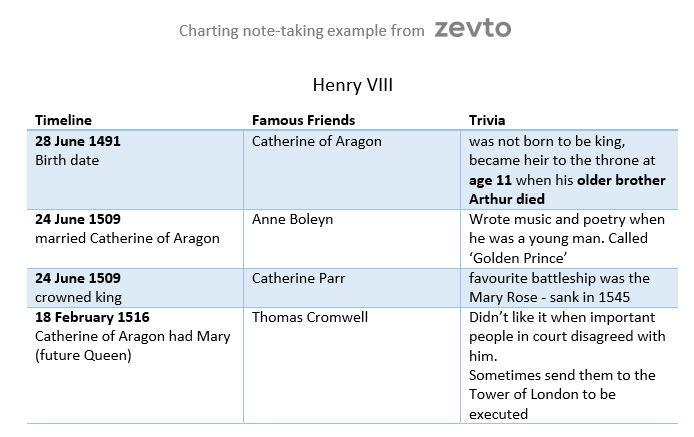By Marco Chase, Updated on Sat 1st February 2020

Note-taking should be easy, efficient and effective. Most people would just jot down notes without proper structure and in long form sentences. Don’t do this, even if the content is heavy, your notes should be quick to write and quick to scan. This is where the charting method comes in.
The charting method of note taking is when you write your notes in columns. Usually you use the columns to separate topics. Keep the notes short and sweet, long notes are hard to contain within the columns and frustratingly difficult to scan.

Use it when you are revising and know you’ll be tested on facts and relationships or when the content is heavy and presented quickly to you. Don’t use it to make notes for a lecture on the fly, however is it useful for creating a quick overview of the lecture.